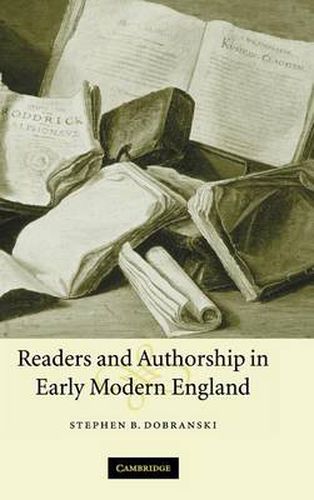Readings Newsletter
Become a Readings Member to make your shopping experience even easier.
Sign in or sign up for free!
You’re not far away from qualifying for FREE standard shipping within Australia
You’ve qualified for FREE standard shipping within Australia
The cart is loading…






While authors in early modern England were gaining new authority - legally, economically, and symbolically - Renaissance readers also were expected to participate in and make use of an author’s writings. In this book, Stephen B. Dobranski examines how the seventeenth-century phenomenon of printing apparently unfinished works ushered in a new emphasis on authors’ responsibility for written texts while it simultaneously reinforced Renaissance practices of active reading. Bringing together textual studies, literary criticism, and book trade history, Dobranski provides fresh insight into Renaissance constructions of authorship and offers new, discerning interpretations of publications by Sir Philip Sidney, Ben Jonson, John Donne, Robert Herrick, and John Milton. The omissions in all these writers’ works provide a unique window into English literary history: through these blank spaces we glimpse the tension between implication versus inference, between writers’ intentions versus readers’ responses, and between an individual author versus a collaborative community.
$9.00 standard shipping within Australia
FREE standard shipping within Australia for orders over $100.00
Express & International shipping calculated at checkout
While authors in early modern England were gaining new authority - legally, economically, and symbolically - Renaissance readers also were expected to participate in and make use of an author’s writings. In this book, Stephen B. Dobranski examines how the seventeenth-century phenomenon of printing apparently unfinished works ushered in a new emphasis on authors’ responsibility for written texts while it simultaneously reinforced Renaissance practices of active reading. Bringing together textual studies, literary criticism, and book trade history, Dobranski provides fresh insight into Renaissance constructions of authorship and offers new, discerning interpretations of publications by Sir Philip Sidney, Ben Jonson, John Donne, Robert Herrick, and John Milton. The omissions in all these writers’ works provide a unique window into English literary history: through these blank spaces we glimpse the tension between implication versus inference, between writers’ intentions versus readers’ responses, and between an individual author versus a collaborative community.